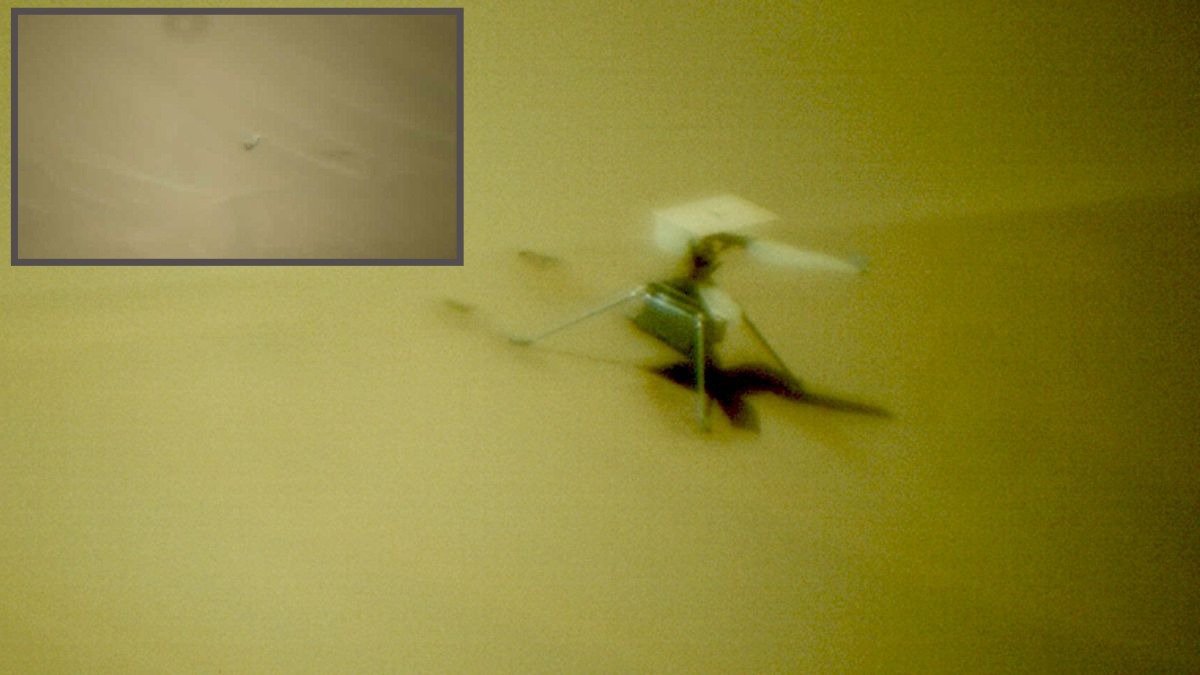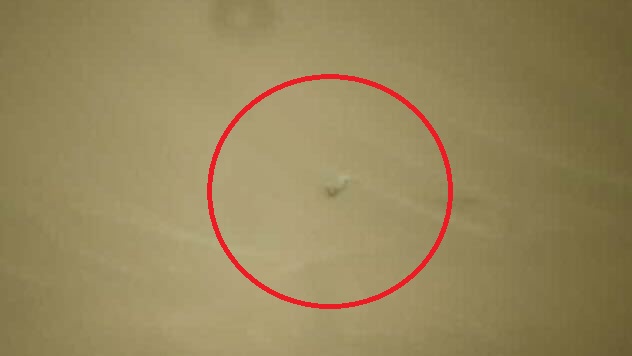Perseverance rover spots Ingenuity helicopter's snapped-off rotor blade on Mars (photos)
The blade landed some 50 feet (15 meters) from the helicopter on Jan. 18.

The blade was broken — and, still unforged, it's been found on Mars.
Space fans scouring the raw images from NASA's Perseverance rover recently spotted the broken helicopter blade from Ingenuity lying on the sands of Mars. Ingenuity is permanently grounded as a result of the blade-snapping incident, a hard landing that occurred at the end of its Jan. 18 flight.
"Nestled in the vibrant red Martian sand, a lonely blade from NASA's Ingenuity helicopter lies about 15 meters [50 feet] from the aircraft's final resting place," the nonprofit Planetary Society wrote Tuesday (Feb. 27) on X, formerly Twitter.
Related: Ingenuity Mars helicopter snapped rotor blade during hard landing last month (video, photo)
Geovisual design student Simeon Schmauß also processed the Perserverance imagery, captured by the rover's powerful SuperCam instrument, into a composite view that shows both the helicopter and its now distant blade. Schmauß shared the results on X, visible below as well.
I processed the image to correct for vignetting, a dust spot on the sensor and processed the colors to approximate how the human eye would see them. The image is part of a mosaic of multiple SuperCam RMI images.Full resolution: https://t.co/ZhAsmpQbco pic.twitter.com/VNZHv2rZnaFebruary 25, 2024
Ingenuity's flying days ended after 72 flights — 67 more than the five originally planned for its technology-demonstrating mission. The 4-pound (1.8 kilograms) drone was the first vehicle ever to take flight on Mars after landing with Perseverance in February 2021, and kept going for nearly three years.
Perseverance imagery downloaded from Mars on Sunday (Feb. 25) showed the broken-off Ingenuity blade. But hidden in shadow in some of the raw imagery was the blade itself, barely visible in Martian dunes.
Breaking space news, the latest updates on rocket launches, skywatching events and more!
The helicopter, operating in Mars' Jezero Crater, demonstrated flight was not only possible but could be done regularly in the Red Planet's thin atmosphere.
After its initial five hops, Ingenuity shifted to a long extended mission in which it was scouting ahead for Perseverance, which is collecting samples for a possible eventual return to Earth (pending funding and technology development for the Mars sample return campaign, whose budget has been under discussion in Congress lately).
What finally downed Ingenuity was a sandy patch of terrain that did not have rocks or other navigation aids to help the helicopter to find its way. As Ingenuity came in for landing, the blade snapped as it hit the ground. But the helicopter, managed by NASA's Jet Propulsion Laboratory (JPL), had already cemented its legacy as a spaceflight pioneer, agency officials said.
"The NASA JPL team didn't just demonstrate the technology," Tiffany Morgan, deputy director of NASA's Mars Exploration Program, said during a Jan. 31 webcast tribute to Ingenuity. "They demonstrated an approach that if we use in the future will really help us to explore other planets and be as awe-inspiring, as amazing, as Ingenuity has been."

Elizabeth Howell (she/her), Ph.D., was a staff writer in the spaceflight channel between 2022 and 2024 specializing in Canadian space news. She was contributing writer for Space.com for 10 years from 2012 to 2024. Elizabeth's reporting includes multiple exclusives with the White House, leading world coverage about a lost-and-found space tomato on the International Space Station, witnessing five human spaceflight launches on two continents, flying parabolic, working inside a spacesuit, and participating in a simulated Mars mission. Her latest book, "Why Am I Taller?" (ECW Press, 2022) is co-written with astronaut Dave Williams.

